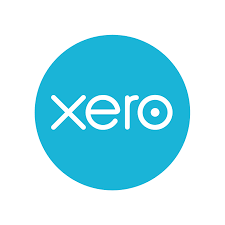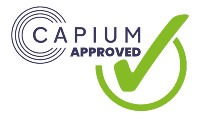 Are you a small business owner who has recently exceeded the VAT threshold? If so, you may be feeling overwhelmed and unsure of what steps to take next. Don’t worry, you’re not alone.
Are you a small business owner who has recently exceeded the VAT threshold? If so, you may be feeling overwhelmed and unsure of what steps to take next. Don’t worry, you’re not alone.
Exceeding the VAT threshold can be both a blessing and a curse for small businesses. On one hand, it means your business is growing and thriving. On the other hand, it also means you now have additional responsibilities and obligations to meet. In this post, we’ll explore what the VAT threshold is, what it means for your business, and what steps you need to take to ensure you’re compliant with HMRC regulations. From understanding the registration process to managing your VAT returns, we’ll provide you with useful information you need to know to navigate this new stage of your business journey. So, let’s dive in and demystify the world of VAT for small business owners!
Understanding the Consequences of Exceeding the VAT Threshold
When a business exceeds the VAT threshold, it means that their VAT taxable turnover has surpassed the current VAT threshold set by HMRC. This threshold is currently set at £85,000. If your business exceeds this threshold, then you will be required to register for VAT and start charging VAT on your goods and services. This can have a significant impact on your business, both financially and operationally.
One of the biggest consequences of exceeding the VAT threshold is that it adds an additional layer of complexity to your accounting and financial management. You will need to keep accurate records of all your VAT transactions, including purchases, sales, and expenses. This can be time-consuming and labour-intensive, especially if you’re not familiar with VAT regulations and requirements. In most circumstances you will have to use accounting software to submit your VAT return.
Another consequence of exceeding the VAT threshold is that it can impact your cash flow. When you start charging VAT, your prices will effectively increase. Which may discourage some customers from purchasing your goods or services, especially if they are individuals, business or other organisations that can not reclaim VAT. Additionally, you will need to pay the VAT you collect to HMRC on a regular basis, which can put a strain on your cash flow if you’re not prepared for it.
Despite these challenges, exceeding the VAT threshold can also be a sign of success and growth for your business. It means that you are generating significant revenue and that your business is thriving. With the right knowledge and preparation, you can successfully navigate this new stage of your business journey.
How to Calculate Your VAT Taxable Turnover
Before you can determine whether you’ve exceeded the VAT threshold, you need to understand how to calculate your VAT taxable turnover. This is the total value of your sales that are subject to VAT. To calculate your VAT taxable turnover, you need to add up the total value of all your sales that are not exempt from VAT.
For example, if you sell goods or services that are exempt from VAT, for example (but not limited to):
- insurance, finance and credit
- education and training
- fundraising events by charities
- subscriptions to membership organisations
then you would not include those sales in your VAT taxable turnover. However, if you sell goods or services that are subject to VAT, then you would include those sales in your VAT taxable turnover. You can read more here.
It’s important to note that your VAT taxable turnover is calculated based on the total value of your sales over a 12-month period, not just the current tax year. This means that if you’re approaching the VAT threshold, you need to keep a close eye on your sales and ensure that you’re calculating your VAT taxable turnover accurately.
When to Register for VAT
The most common reasons that you must register for Value Added Tax (VAT) are:
- You expect you VAT taxable turnover to be more than the VAT threshold in the next 30-day period. If this happens you need to register by the end of the 30-day period with the effective date of VAT registration being the date you realised.
- You had a VAT taxable turnover of more than the VAT threshold in the past 12 months. This is on a rolling month basis, i.e. at the end of each calendar month you need to calculate if you have exceeded the VAT threshold in the previous 12 months. You have 30 days from the end of the month that you exceeded the threshold to register, and your effective date of VAT registration is the first day of the second month after you went over the threshold.
- Acquisition/take-over etc of a VAT registered business may mean you have to register for VAT with the effective date being at the point of acquisition.
The VAT threshold is set by the government and varies periodically. At the time of writing it is £85,000.
Please be aware that there are certain other circumstances that may mean you need to register for VAT. There are different rules if you and your business are based outside the UK. If in doubt speak to an expert.
What if I just temporarily went over the VAT threshold?
Examples of this may be a one-off large contract, job or sale. You may apply for exception from registration. You will need to explain to HMRC why you went over the VAT threshold and why you consider that your business VAT taxable turnover will not exceed the deregistration threshold (currently £83,000 at the time of writing) in the following 12 months.
Can I register for VAT even if the rules do not require me to?
Yes, this is possible in most circumstances. Examples of why HMRC will reject an application include; if they don’t believe that you are carrying out a business or that the type of sales your business makes are exempt or outside the scope of VAT.
This may be beneficial to you, examples include:
- Some customers perceive a VAT registered business to be more reputable than a non-VAT registered one.
- If you are not VAT registered it can act as flag that your business is small to customers ie sales below the VAT threshold. This may or may not be an advantage.
- You can claim VAT back on your business purchases and expenses. This needs to be considered in turn with if you will need to reduce your prices if you were VAT registered, e.g. if your customers were individuals and not VAT registered businesses. If you sell mainly to businesses that are VAT registered, then they will be able to claim the VAT back on your sales. So, you will not be any more expensive to them by simply adding VAT to your prices.
There are of course, some disadvantages of registering for VAT, with a major one being the additional administrative burden.
How to Register for VAT
Registering for VAT can be a complex process, especially if you’re not familiar with HMRC regulations and requirements. Here’s a step-by-step guide to help you through the process:
- Determine whether you need to register for VAT .
- Gather all the necessary information, including your business details, bank account information, and information about your sales and expenses.
- Register for VAT online using the HMRC website.
- Wait for HMRC to process your application and issue your VAT registration number.
- Start charging VAT on your goods and services from the date of your registration.
For further information on how to register for VAT visit the HMRC website.
It’s important to note that you will need to keep accurate records of all your VAT transactions from the date of your registration. This includes invoices, receipts, and other documentation related to your VAT transactions. You should consider how you are going to do this, in most situation you should use bookkeeping software.
VAT Return submission and payment deadlines
Once you’re registered for VAT, you will need to submit VAT returns pay the VAT you collect to HMRC on a regular basis.
A VAT return is a document that VAT registered businesses in the UK must submit to HM Revenue and Customs usually every three months and electronically. It details the amount of VAT charged to customers and the amount of VAT paid to other businesses during that period.
Even if a business has no VAT to pay or reclaim, they are still required to submit a VAT return if they are registered for VAT. This process helps HMRC keep track of VAT payments and refunds.
The payment deadlines depend on the type of VAT scheme you’re on. For businesses on the standard VAT scheme, deadline for submitting your VAT return and paying your VAT is usually one month and seven days after the end of the VAT period.
For businesses on the annual accounting scheme the deadlines are different, you can read more here.
It’s important to note that you must meet the VAT deadlines to avoid potential penalties and interest charges.
Special VAT Schemes for Small Businesses
There are several exemptions and special schemes available for small businesses that may make VAT compliance easier and sometimes more affordable. Here are a few examples:
– The Flat Rate Scheme: This scheme allows small businesses to pay a fixed rate of VAT based on their industry rather than the actual VAT they owe. This can simplify VAT accounting and may result in lower VAT payments for some businesses.
– The Annual Accounting Scheme: This scheme allows businesses to make one return per year, rather than quarterly returns. This can help with reduce the burden of VAT compliance.
– The Cash Accounting Scheme: This scheme allows businesses to account for VAT based on their cash flow, rather than on the date of the invoice. This can help with cash flow management and may make VAT compliance easier for businesses that have long payment terms.
– Exemptions for Small Businesses: Some small businesses may be exempt from VAT registration if they meet
It’s important to note that these schemes and exemptions may not be suitable for all businesses, and it’s important to seek professional advice before making any decisions about your VAT compliance.
Tips for Managing Your VAT Obligations
Managing your VAT obligations can be challenging, but there are several tips and strategies you can use to make it easier:
– Keep accurate records of all your VAT transactions, including invoices, receipts, and other documentation.
– Use accounting software or hire an accountant to help you manage your VAT obligations.
– Set aside money for VAT payments to avoid cash flow issues.
– Keep track of your VAT payment deadlines to avoid penalties and interest charges.
– Seek professional advice if you’re unsure about any aspect of your VAT compliance.
Conclusion
Exceeding the VAT threshold can be a daunting prospect for small business owners, but with the right knowledge and preparation, you can navigate this new stage of your business journey successfully. By keeping accurate records, using accounting software or hiring an accountant, and staying on top of your VAT payment deadlines, you can avoid penalties and interest charges and keep your business running smoothly.
We would be pleased to advise on the VAT threshold, VAT registration, voluntary registration and the registration process. For further information please contact us.


